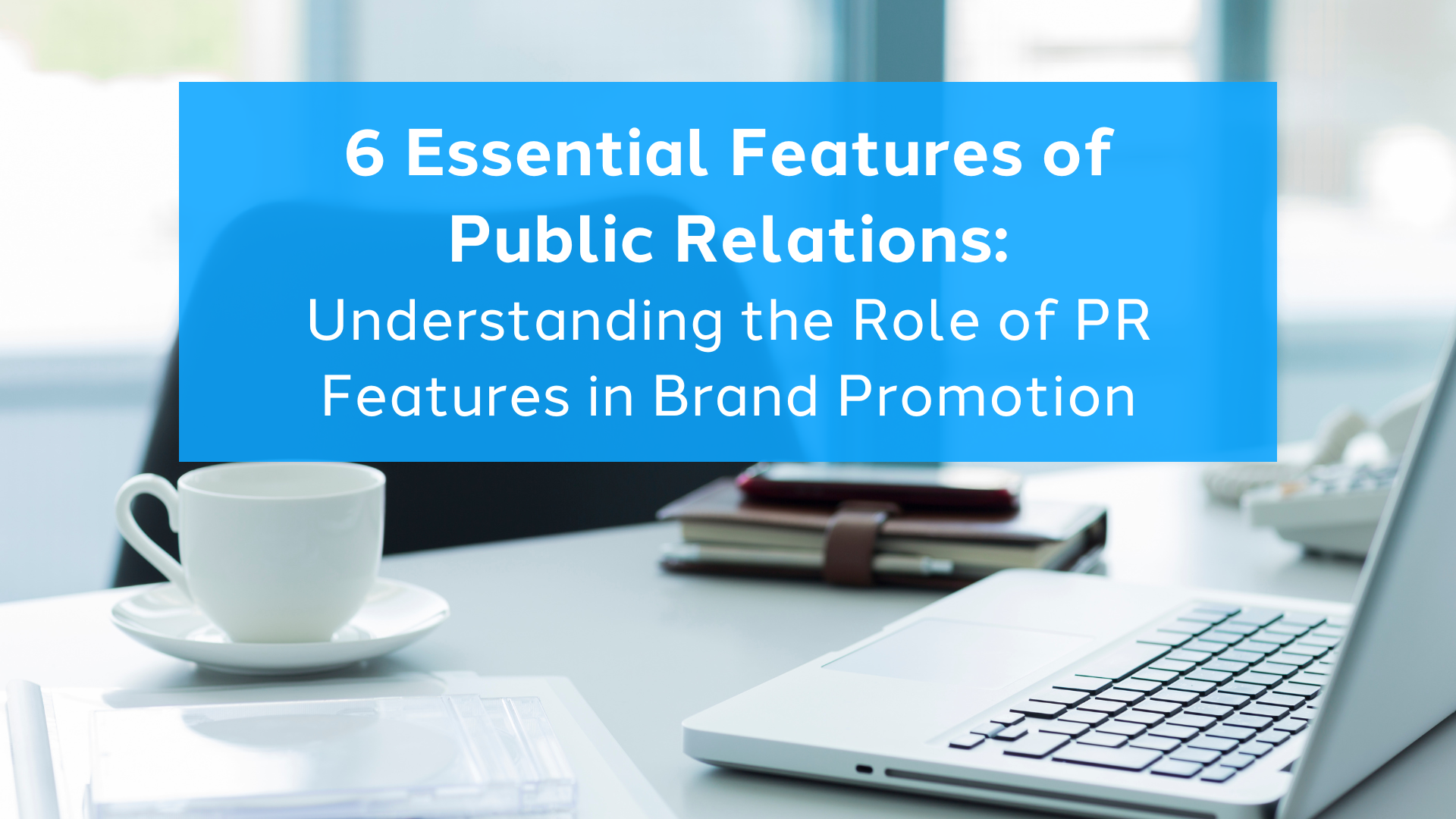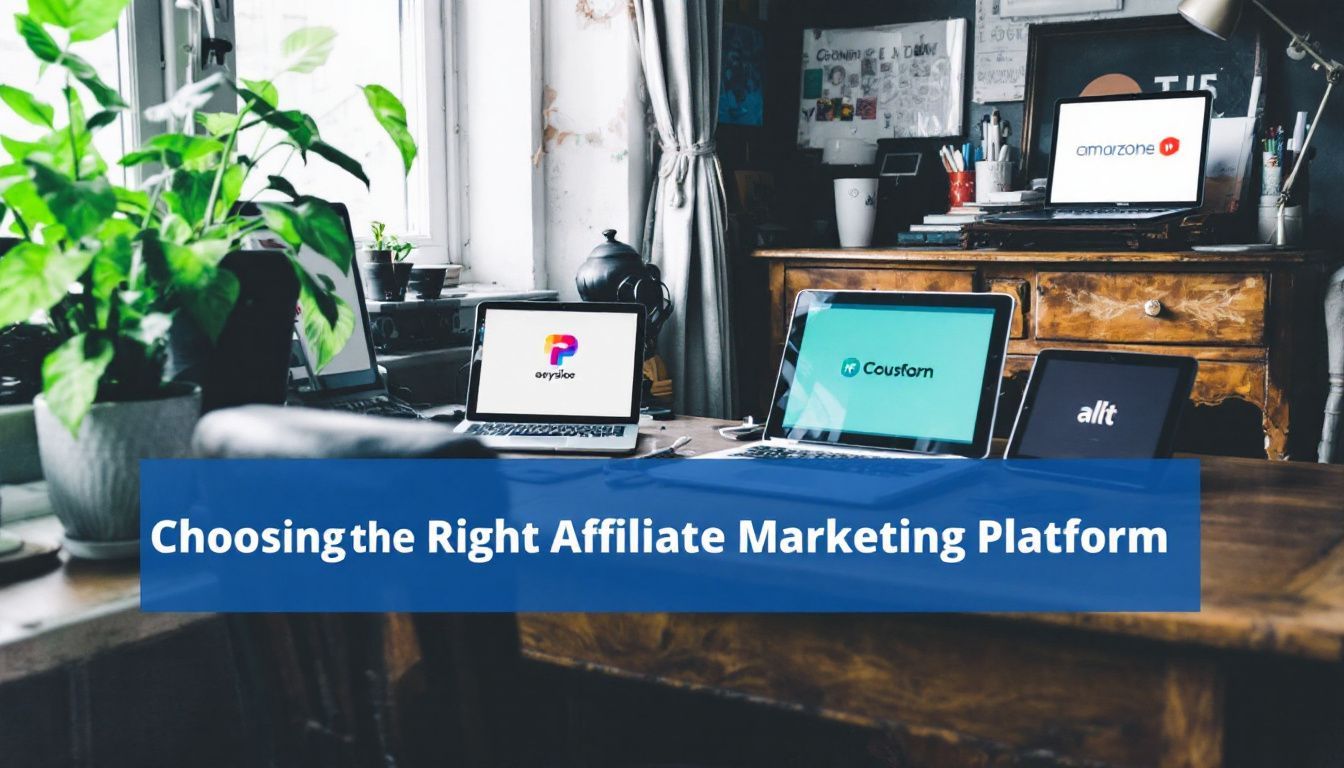You’re aiming to boost your brand but feel unsure how. Public relations (PR) can shape your company’s story in the eyes of your audience. This article will guide you through six essential PR features that are key to promoting your brand effectively.
Defining Public Relations in Modern Branding
Public Relations (PR) plays a key role in shaping how people see your brand in the digital age. It goes beyond traditional press releases and media contacts. Now, it includes managing your image on social media platforms like TikTok and using targeted advertising to reach your audience more effectively.
The goal is still to create a positive buzz around what you offer and stand for, but the methods have expanded with technology.
The Public Relations Society of America (PRSA) sees PR as vital in building good relationships between an organization and its audience. In today’s branding world, this means being savvy with digital tools—like media monitoring software—to keep up with what people say about you online.
It also involves writing skills that grab attention on any platform, from tweets to news articles about your company’s latest achievements or how you handle crisis management. Good PR ensures that when someone searches for your brand online, they find stories that make them want to learn more or get involved with what you do.
Essential Features of Public Relations
Public Relations (PR) shapes how people see your brand. It uses tools like press releases and social media to tell your story in an appealing way.
Strategic Storytelling
Strategic storytelling captivates audiences and sparks engagement. Brands like Surreal Cereal use playful narratives to connect with consumers while promoting their mission, “Never stop playing.” This approach makes your brand memorable.
Volkswagen simplifies intricate messages through effective storytelling, allowing customers to relate easily.
As a digital media publisher or marketer, leverage storytelling in your public relations strategies. Use visuals and compelling narratives that resonate with your target audience. Share meaningful stories through news releases and social media platforms.
Create emotional connections that enhance public image and strengthen client relationships. Engage the curious mind to drive loyalty for your brand’s value proposition.
Media Relations Expertise
Media relations expertise plays a vital role in public relations. It involves building strong relationships with media outlets, such as newspapers and news media. Marketers who master this skill can effectively communicate brand messages to wide audiences.
Fery Kaszoni from Search Intelligence helped Bulk secure 40 pieces of national media coverage through targeted outreach.
Press releases serve as essential tools in this process. A survey indicates that 74% of journalists prefer them for coverage, showcasing their importance. By crafting compelling stories and personalizing content, you capture the attention of gatekeepers within the industry.
This connection leads to increased visibility and strengthens your brand image in competitive markets like DTC eCommerce.
Crisis Management
Crisis management plays a vital role in protecting your brand’s reputation. You must respond swiftly to any situation that threatens public trust. Sainsbury’s handled a technical glitch effectively through strategic communication.
They showed transparency and confidence, which helped maintain customer loyalty.
Airbase faced the Silicon Valley Bank collapse with clear messaging. Their honest updates reassured stakeholders and built credibility during turmoil. Effective crisis management helps you navigate challenges while maintaining public perception.
Embracing these strategies will enhance your brand’s resilience against unexpected hurdles.
Digital Savvy
Digital savviness is crucial for modern public relations. It blends traditional strategies with digital marketing elements like content creation, SEO, and influencer outreach. For example, Rise at Seven’s campaign for Pretty Little Thing effectively used TikTok influencers.
This approach boosted media exposure significantly.
Understanding analytics helps you make informed decisions. Data-driven insights guide your strategy and improve engagement with audiences online. Emphasizing trends in visual media allows you to craft compelling narratives that resonate.
Stay ahead by mastering digital tools and connecting authentically through social platforms like websites and blogs. This will enhance brand visibility while fostering stronger relationships with customers and stakeholders alike.
Data-Driven Decision Making
Data-driven decision making fuels effective public relations strategies. You can leverage analytics to guide your PR efforts. Focus on gathering insights from market research and customer behavior.
Use this data to adapt your storytelling and media outreach.
Tracking SEO performance shows how digital PR impacts customer discovery. By targeting niche publications, you improve visibility online. Monitor engagement metrics to see what resonates with your audience.
Build ongoing relationships with journalists based on these insights rather than relying on mass outreach alone. Implementing a data-driven approach enhances communication effectiveness in your campaigns, driving brand loyalty and awareness for DTC eCommerce brands.
Ethical Transparency
Ethical transparency builds trust between brands and their audiences. Digital media publishers and marketers must prioritize honest communication. This commitment fosters genuine relationships with consumers.
Use clear messages that reflect your values, including corporate social responsibility efforts. Avoid questionable practices like link buying, which can harm your reputation.
Carly Martinetti stresses the importance of newsworthy angles in PR. Craft stories that resonate with people while being truthful about your brand’s intentions. Implement ethical guidelines across all campaigns to ensure authenticity in communications.
As a result, you will enhance your brand’s image and create lasting connections with stakeholders who appreciate transparency in advertisements and public service announcements alike.
The Role of PR in Brand Promotion
Public relations plays a crucial role in shaping your brand’s image and managing public perception. It drives effective communication with stakeholders while enhancing your online presence.
Strong PR strategies connect you to your audience, making them feel engaged and valued. Use these tools to boost your brand’s visibility and reputation. Explore the power of PR features further to elevate your marketing efforts!
Building Brand Image
Your brand image shapes how customers see you. Use PR to create strong narratives around your products and values. Highlight your campaigns, accomplishments, and unique aspects through strategic storytelling.
This approach generates positive publicity that enhances perception.
Engage actively with media relations experts to get noticed. They can help you share news effectively through press releases or letters to the editor. Use digital platforms for viral content that captures attention quickly.
Foster empathetic communication with stakeholders to build trust over time. Building a solid brand image requires ongoing effort and smart strategies in public relations.
Managing Public Perception
Managing public perception plays a crucial role in today’s market. PR specialists help shape how your audience views your brand. They build strong relationships with stakeholders, including customers and the media.
Positive interactions can lead to trust and loyalty among your target audience. Using effective oral communication strategies during news conferences keeps everyone informed. Crafting engaging letters to the editor will also enhance your image.
A company must prepare for negative announcements that may trigger backlash. Exceptional crisis management skills quickly mitigate damage to reputation. Digital savvy enables you to leverage online platforms for brand promotion effectively.
Data-driven decision-making helps tailor messages, ensuring they resonate well with consumers’ curiosity and preferences for personalized experiences. Understanding these aspects positions you for success in managing public perception strategically.
Enhancing Online Presence
Digital PR strengthens your online presence. It creates positive brand associations and builds awareness. This strategy can improve your SEO, which influences search behaviors. As customers discover you through organic searches, they gain trust in your brand.
Focus on link-building and partnerships with influencers to broaden your reach. Collaborating with content creators allows for authentic connections with audiences. Avoid questionable practices like buying links; instead, prioritize ethical transparency.
Your digital efforts will enhance brand authority and credibility in the crowded internet landscape.
Facilitating Stakeholder Communication
Effective stakeholder communication strengthens your brand. PR specialists build trust with customers, government officials, and the media. They utilize tools like press releases and newsletters to share important updates and engage with these groups.
This open dialogue addresses concerns promptly.
For publicly traded companies, maintaining a positive image is crucial. Clear communication can manage shareholder worries effectively. You gain loyalty when stakeholders feel informed and valued.
Prioritizing ethical transparency in all communications reinforces this bond, ensuring everyone trusts your brand’s intentions in finance or eCommerce initiatives like cookies personalization or targeted adverts.
PR vs. Other Marketing Strategies
PR stands apart from other marketing strategies in its emphasis on building relationships. It connects brands with their audiences through authentic communication, while advertising often focuses on direct sales pitches.
Understanding these differences can help you choose the right approach for your goals. Explore how PR enhances brand reputation and trust, setting it apart from traditional methods like direct marketing or social media campaigns.
PR vs. Advertising
Public relations and advertising serve different purposes. Advertising aims to capture public attention through paid promotion. It uses creative visuals, catchy slogans, and strategic placements to drive direct sales.
In contrast, PR focuses on building relationships with stakeholders. PR seeks organic promotion by creating trust and credibility among the audience.
Statistics show that 92% of customers trust earned media more than traditional ads. This trust enhances brand loyalty long-term. While advertisements can grab immediate views, effective PR fosters deeper connections with consumers.
Startups that emphasize transparency in their communication will likely see a stronger brand image over time compared to those relying heavily on advertising alone.
PR vs. Direct Marketing
Public relations (PR) and direct marketing have distinct goals. PR focuses on managing a brand’s reputation while building credibility over time. In contrast, direct marketing aims for quick sales through targeted campaigns.
You invest in PR to foster trust with your audience, yielding an average return on investment (ROI) of 5:1. This long-term approach transforms how people perceive your brand.
Direct marketing uses immediate tactics like promotions or discounts to drive sales quickly. It relies heavily on data and personalization to reach potential customers directly through emails or ads.
Marketers often prioritize short-term gains over lasting relationships when they choose this route. Understanding these differences helps you decide the best strategy for promoting your e-commerce brand effectively.
PR vs. Digital Marketing
PR and digital marketing serve distinct roles in brand strategies. While PR focuses on managing relationships with the public, digital marketing drives online visibility through targeted campaigns.
You leverage media relations to shape perceptions, whereas digital marketing uses content and SEO strategies for broader reach.
Digital PR combines traditional methods with modern practices like influencer outreach and social media engagement. This approach emphasizes niche publications over mainstream outlets, giving your brand a unique voice.
Effective digital PR enhances search behaviors and customer discovery, creating valuable touchpoints in the consumer journey.
The Impact of Effective PR Features on Business Success
Effective public relations directly influences your business success. Strong storytelling captivates your audience and builds loyalty. Skilled media relations help you attract positive attention, enhancing your brand image.
Crisis management safeguards your reputation during tough times. Embracing digital tools boosts your engagement with customers online. Data-driven decisions lead to better strategies that resonate with consumers’ needs.
Transparency fosters trust, making clients more likely to engage with you. Explore how these PR features can transform your approach and elevate your brand’s potential!
Case Study Examples
You can learn from real-world examples of public relations success. These case studies showcase how effective PR strategies lead to significant results.
- Wendy’s Pumpkin Spice Frosty
Wendy’s released a press release for its pumpkin spice frosty, which generated 394 syndications. This campaign illustrates the power of strategic storytelling in engaging customers and gaining media attention.
- Lush Bath Bomb Campaign
Lush launched a newsjacking campaign for its bath bomb. The effort resulted in 313 mentions and 146 links across various platforms. This example highlights how timely responses to trending topics can enhance brand visibility.
- Pretty Little Thing TikTok Campaign
Rise at Seven collaborated with TikTok influencers for Pretty Little Thing’s campaign. This partnership led to significant media exposure, showing how influencer marketing effectively reaches targeted demographics.
- Surreal Cereal Brand Narrative
Surreal cereal captivates audiences through playful storytelling with its mission of “Never stop playing.” Their fun narrative resonates with consumers, demonstrating that authenticity attracts customer loyalty.
- Sainsbury’s Crisis Management
When Sainsbury’s faced a technical glitch, it implemented an effective crisis communication strategy. The quick response helped manage public perception and maintain trust among customers.
These examples demonstrate the critical features of public relations in building brand image and managing stakeholder relationships effectively. Emphasizing personalization fosters deeper connections with your audience, driving both engagement and loyalty.
Scaling PR Features with the Katalys Marketplace
The Katalys Marketplace is an ideal platform for brands and agencies to manage and scale public relations (PR) campaigns effectively. Through a broad network of publishers and media opportunities, Katalys simplifies the PR process, enabling you to implement PR features like strategic storytelling, media relations, and digital engagement at scale, helping brands shape their narratives and strengthen their public image.
Key advantages of using the Katalys Marketplace for PR campaigns include:
- Comprehensive Access to High-Quality Media Outlets: The Katalys Marketplace connects you to a diverse selection of publishers and platforms, ensuring your PR content reaches a broad and relevant audience. This extensive network supports tailored media placements that align with your brand’s image and messaging, enhancing visibility.
- Efficient Media Relations Management: Katalys streamlines the process of managing relationships with media outlets. With tools for tracking pitches, placements, and engagement, the platform helps you create impactful PR pieces—whether through press releases, editorials, or crisis communication—while maintaining strong media relations.
- Advanced Targeting and Storytelling Tools: Katalys enables precise targeting based on demographics, interests, and behaviors, allowing brands to craft and distribute stories that resonate deeply with specific audiences. With these tools, brands can shape narratives that align with their values and goals, building trust and engagement with their audience.
- Real-Time Analytics and Data-Driven Insights: Katalys provides in-depth analytics for tracking the performance of PR features, including engagement rates, reach, and audience sentiment. This data allows brands to evaluate and refine PR strategies based on what resonates with their audience, ensuring more impactful storytelling and relationship-building.
The Katalys Marketplace supports brands in scaling essential PR activities, from strategic storytelling and media outreach to crisis management and ethical transparency. With its user-friendly platform and robust network, Katalys empowers brands to enhance their public relations efforts, connecting them meaningfully with audiences and strengthening their market presence.
Conclusion
Effective public relations play a vital role in promoting your brand. Each essential feature, from strategic storytelling to ethical transparency, enhances how people see your business.
Build credibility and create meaningful connections with your audience. Use the right tools like press releases and social media posts to spread your message. Focus on these elements for impactful PR that drives success in today’s market.
FAQs
1. What role does personalization play in public relations and brand promotion?
Personalization is a key feature in public relations, allowing brands to tailor their messages to specific audiences. This targeted approach not only enhances the effectiveness of communication but also strengthens customer relationships.
2. How can a letter to the editor be used as an effective PR tool?
A well-crafted letter to the editor can serve as an influential PR tool by providing a platform for brands to express views, clarify misconceptions, or highlight achievements. It engages readers directly and adds credibility due to its third-party endorsement.
3. Can browser features contribute towards successful public relations strategies?
Absolutely! Browser features such as push notifications, bookmarks, and search engine optimization help reach wider audiences efficiently. These tools aid in disseminating information quickly while ensuring your content remains accessible and visible.
4. Why are these six essential features significant for understanding the role of PR in brand promotion?
Understanding these six essential features provides insights into how PR operates within brand promotion – from leveraging personalized messaging and making use of letters to editors, to optimizing browser functions for enhanced visibility. Each feature contributes uniquely towards achieving promotional goals effectively.


